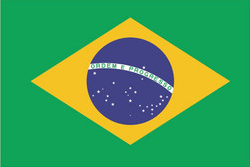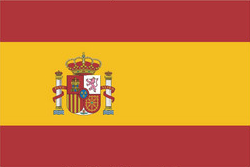On August 13, 2014, DigitalGlobe launched WorldView-3 into orbit. On August 19, a mere six days after launch, our team completed commissioning the satellite bus and opened the door on the main telescope to begin observing our changing planet. And on August 21, we completed our focusing and achieved Initial Operational Capability (“IOC”) on theentire suite of WorldView-3’s 27 super-spectral bands.
Jeff Tarr, Chief Executive Officer, said “We are delighted that even in the early stages of calibration and commissioning WorldView-3 is revealing new insights that will enable customers to address some of the most pressing global challenges. WorldView-3 performance is exceeding our expectations and is a great step forward in helping our customers make critical decisions with confidence as they save lives, resources and time.”
We are pleased to share several WorldView-3 image examples from our collection of Madrid Spain, and highlight a variety of use cases for existing and new DigitalGlobe customers. Because of the regulatory restrictions, we can’t yet display the 30 cm native resolution data, so we’re sharing imagery resampled to 40 cm which is available to download below.
Click the link below to download referenced examples:
As shown in our WorldView-3 slide examples, customers can more easily determine the type of vehicle (cars, trucks, sedans, mini vans) and its speed and direction, which is valuable for a range of industry vertical customers. With 30 cm super-spectral imagery, quantitative assessments of the state of highway networks — including surface wear — can provide valuable maintenance planning information to national, state, and local governments.
In our second example, WorldView-3 offers the improved ability to distinguish different types of aircraft as well as their equipment and features. Assessing vehicle type, state of activity, condition and maintenance are valuable to governments and other civil aviation stakeholders.
Highly precise images of our changing planet are important for decision makers managing Earth’s natural resources. With WorldView-3, DigitalGlobe can automatically distinguish different colors, textures and measure change over time which is important for the energy sector, conservationists, and governments. Our Short Wave Infra-Red (SWIR) sensor will multiply the value of WorldView-3 imagery by enabling the detection of specific mineral content and species of vegetation through signatures not identifiable with the naked eye.
WorldView-3 can also more accurately monitor the rate of development and investment at a regional or global scale. This includes the rate of construction as well as finer details like building materials, roof-top reflectance, road networks and population density, which is valuable to governments, industry and location based service customers. In one example image, individual shipping containers can easily be counted and measured which is valuable information for monitoring economic activity and trends at various marine ports, airports, rail yards and other logistics hubs.
We are beyond thrilled by the clarity and quality of the imagery that we are sharing today. We thank our partners at Ball Aerospace and Exelis for building such a terrific satellite, and to the Lockheed Martin and ULA teams for putting it on orbit safely.
You can download larger scenes of the Madrid imagery:
Download the uncompressed images (.TIF)
Download the compressed images (.JPEG)
Source: Digital Globe








